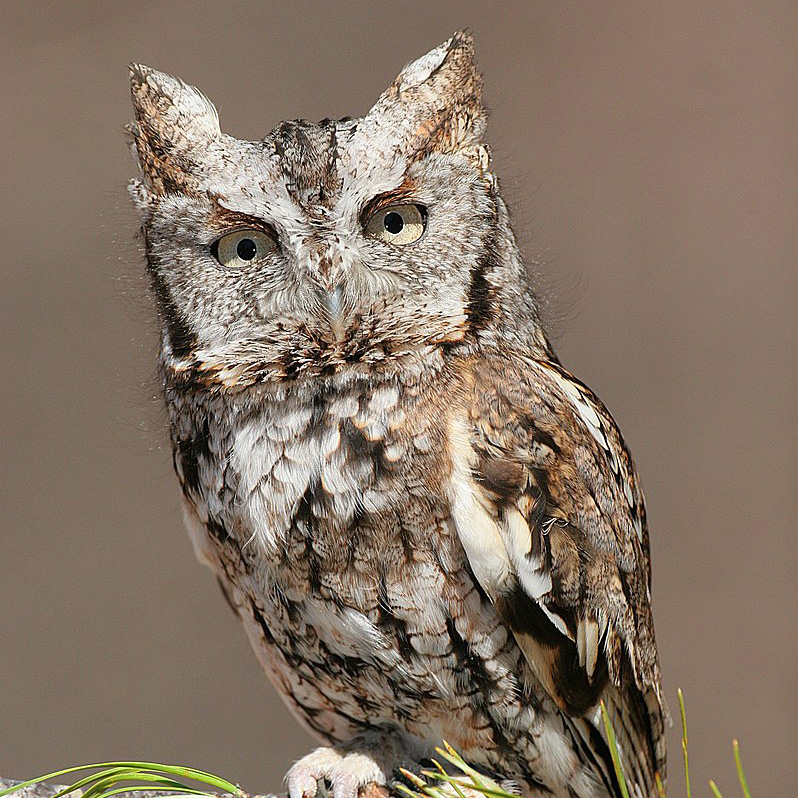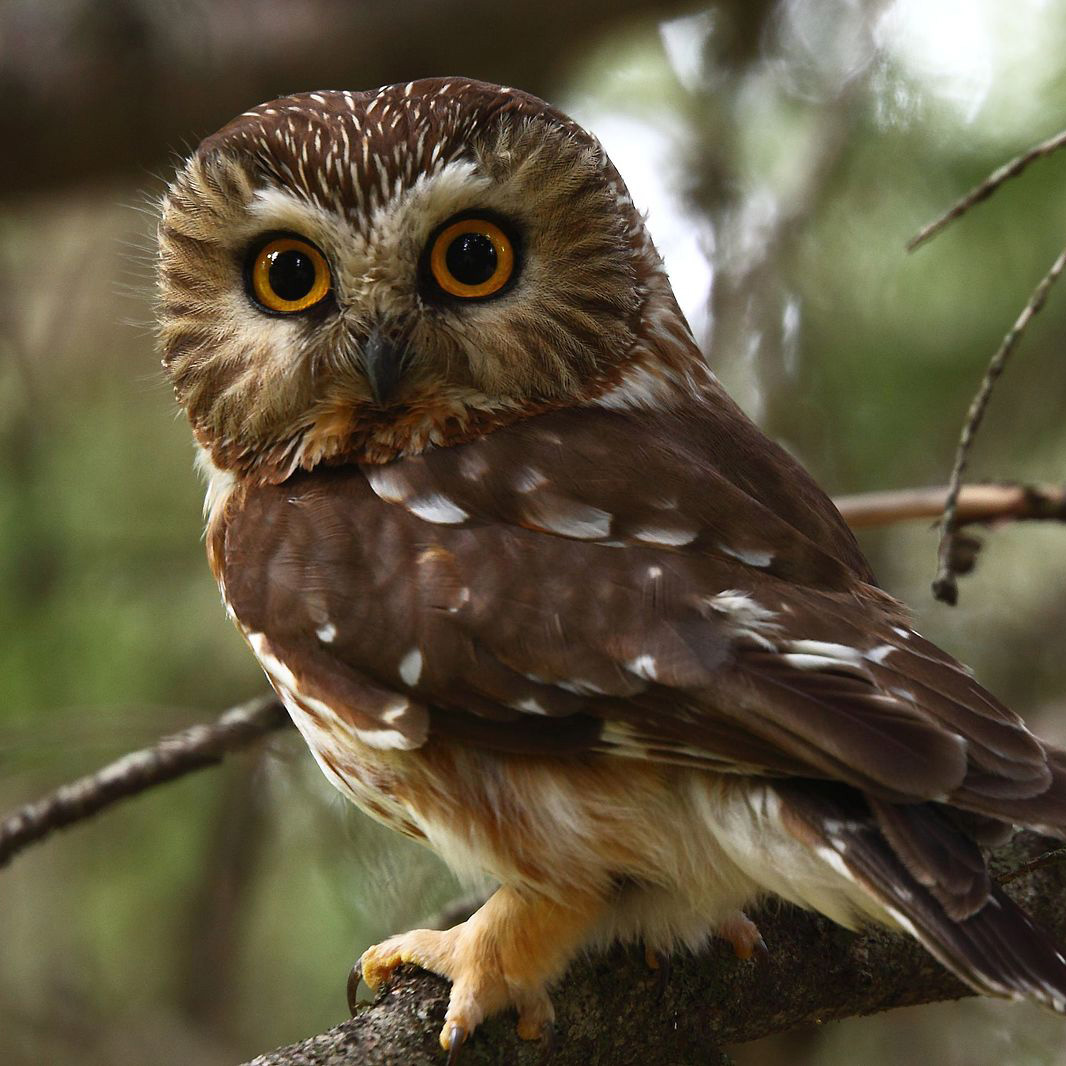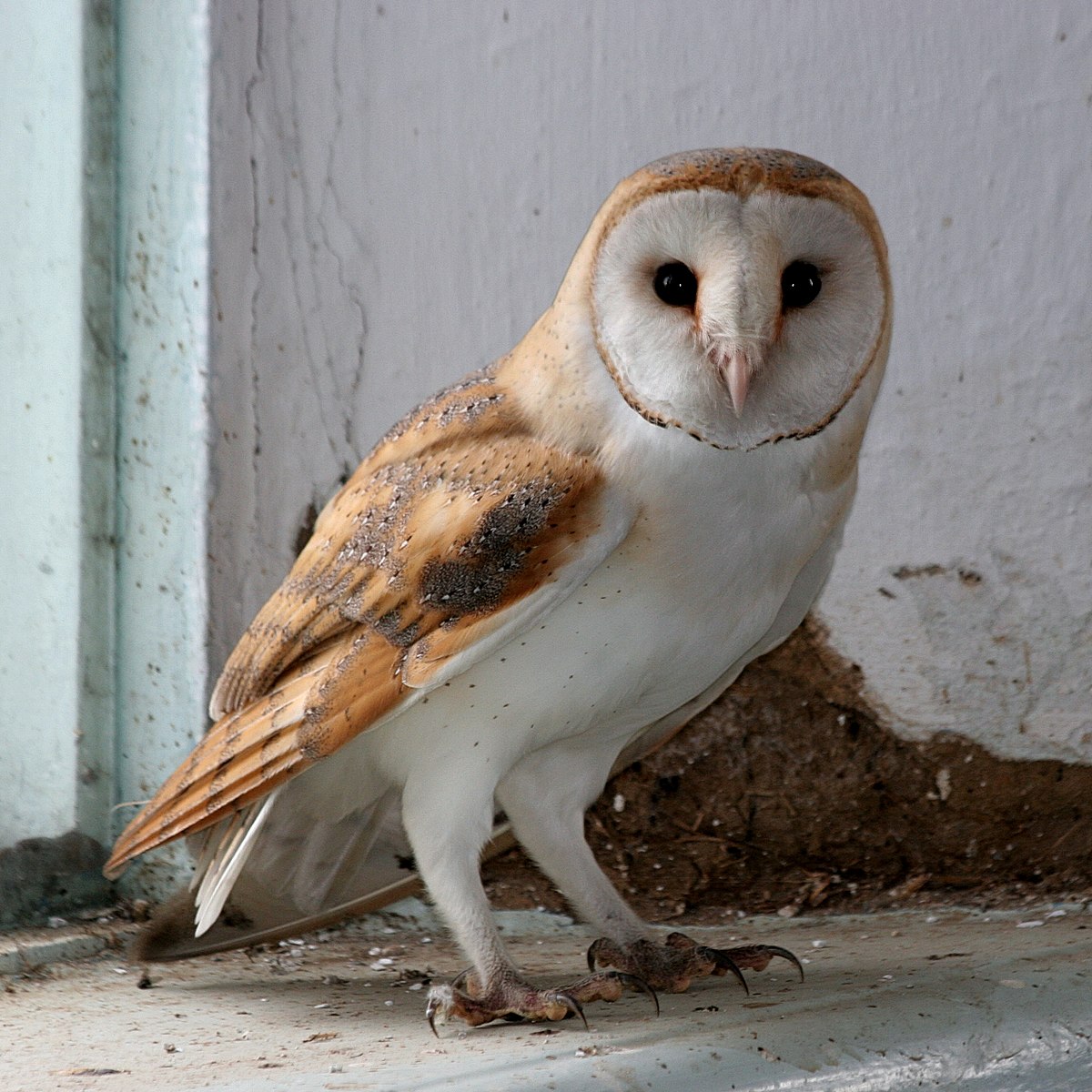Owl Exhibit
Check out this video that introduces all the owls displayed in this exhibit case:
Below is a list of all of the owl species in our collection. Click or tap on the owl that you want to learn more about.
Typically owls hunt from a branch watching and listening for prey (movement). When the owl detects something it will swoop down flying close to the ground. As it gets closer to the prey the owl will stop beating its wings and stretch out its talons to capture and kill the prey. It will then take the prey to its perch to eat.(if the prey is small enough). The fur, feathers and bones are undigestible so they get coughed up in the form of a pellet about 24 hrs after eating.
Owls have excellent eyesight. The eyes take up much of the room in its head and the eyes are stationary (if people’s eyes were comparatively as big as owls they would be the size of softballs). To accommodate this the owls have extra bones in their neck to allow the head to turn 3/4 of the way around. Their eyes also have a 3rd eyelid called a nictating membrane which protects the eyes as they fly through the woods and fields.
Owls’ hearing is probably the best in the animal world. In fact, an owl can hear a mouse step on a twig 75 ft away! The ears are not on top of the head where the ear tufts are but holes in the side of the head. In most owls the ears are asymmetrical (one higher than the other) to allow for triangulation(figuring out exactly where the prey is). The feather tufts and facia disc actually help funnel sound to the ears.
Like all birds of prey, owls have a sharp beak for ripping and tearing when their prey is too large to swallow whole.
As in most birds of prey females tend to be larger than the males.








